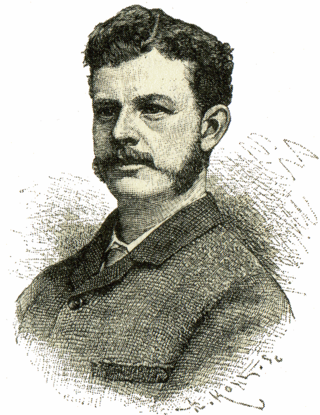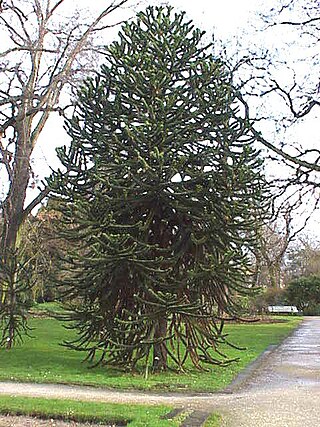
Begonia is a genus of perennial flowering plants in the family Begoniaceae. The genus contains more than 2,000 different plant species. The Begonias are native to moist subtropical and tropical climates. Some species are commonly grown indoors as ornamental houseplants in cooler climates. In cooler climates some species are cultivated outside in summertime for their bright colorful flowers, which have sepals but no petals.

The Veitch Nurseries were the largest group of family-run plant nurseries in Europe during the 19th century. Started by John Veitch sometime before 1808, the original nursery grew substantially over several decades and was eventually split into two separate businesses—based at Chelsea and Exeter—as it became unfeasible to run the whole operation from one location. There was a Veitch Nursery in Kingston at Coombe, on Kingston Hill. Famous plant hunters in the Victorian period employed by the Veitch family include the brothers Thomas Lobb and William Lobb from Cornwall and David Bowman.

Sir Harry James Veitch was an English horticulturist in the nineteenth century, who was the head of the family nursery business, James Veitch & Sons, based in Chelsea, London. He was instrumental in establishing the Chelsea Flower Show, which led to his being knighted for services to horticulture.

Peter Christian Massyn Veitch was a member of the family of horticulturists who established the renowned family business Veitch Nurseries.

James Herbert Veitch F.L.S., F.R.H.S., was a member of the Veitch family who were distinguished horticulturists and nursery-men for over a century.

Masdevallia veitchiana, also known as Veitch's masdevallia or king of the masdevallias, is an orchid species of the genus Masdevallia.

Charles Maries was an English botanist and plant collector who was sent by James Veitch & Sons of Chelsea, London to search for new hardy plants in Japan, China and Taiwan between 1877 and 1879; there he discovered over 500 new species, which Veitch introduced to England. Amongst his finds, several bear his name, including Abies mariesii, Davallia mariesii, Hydrangea macrophylla "Mariesii", Platycodon grandiflorus "Mariesii" and Viburnum plicatum "Mariesii".

Gustav Wallis was a German plant collector who introduced over 1,000 plant species to Europe, many of which were named after him. He was particularly focused on orchid hunting during the Victorian orchid craze, but also was the first European collector of plants such as large-leaved Anthurium specimens that continue to be among the most sought after today.

Tuberous begonias are a group of Begonia cultivars, sometimes regarded as some of the most spectacular of the genus.

Begonia pearcei is a plant in the begonia family, Begoniaceae. It was introduced to Europe in 1864 by Richard Pearce who discovered it in the Bolivian Andes and is important in the hybridising of the Begonia × tuberhybrida begonias, the first of which appeared in 1867.

Begonia veitchii is a plant in the begonia family, Begoniaceae, which was introduced to Europe in 1866 by Richard Pearce who discovered it in the Peruvian Andes near Cusco at an elevation of from 10,000 feet (3,000 m) and 12,000 feet (3,700 m). It was named after Pearce's employers, James Veitch & Sons of Chelsea, London. It can be found today in the mountains around Machu Picchu. A later plant collector, Walter Davis, found Begonia veitchii inhabiting rocky positions by waterfalls, in company with Masdevallia veitchiana.
Richard Pearce was a British plant collector, who introduced the tuberous begonia to England, which led to the development of the hybrid begonias grown today.

Begonia davisii is a plant in the begonia family, Begoniaceae, which was used in the early days of breeding Begonia × tuberhybrida cultivars.
Walter Davis was an English plant collector, who collected in South America for James Veitch & Sons of Chelsea, London.
David Bowman was a British plant collector who, in 1866, was sent by James Veitch & Sons to collect in Brazil. The species Dieffenbachia bowmanii is named after him.

Oncidium alexandrae, synonyms including Odontoglossum crispum, is an epiphytic orchid in the genus Oncidium. Known as the curled odontoglossum, it is considered by many to be the most beautiful orchid of all but is also one of the most difficult to grow.

William Lobb was a British plant collector, employed by Veitch Nurseries of Exeter, who was responsible for introducing to commercial growers Britain Araucaria araucana from Chile and the massive Sequoiadendron giganteum (Wellingtonia) from North America.
John Seden (1840–1921) was a hybridist and horticulturist best known for the hybrids he created while in the employment of Veitch Nurseries. He was trained in hybridizing by John Dominy in 1861. In 1873 he began hybridizing tuberous begonias which in turn formed the basis from which modern garden begonias are derived.

John Dominy was a British horticulturist and plant hybridiser. He is best known as a gardener at the Veitch Nurseries, where he worked most of his life, first at James and James Veitch in Exeter (1834–1841) and later at the group's Chelsea-based business. In 1856 Dominy flowered the first known manmade orchid hybrid, Calanthe Dominyi. He is also noted for hybridising Nepenthes and fuchsias. During his time at the Veitch Nurseries, Dominy mentored John Seden, who would go on to become a distinguished hybridist in his own right.
Hippeastrum leopoldii is a flowering perennial herbaceous bulbous plant, in the family Amaryllidaceae, distributed from Peru to Bolivia.















